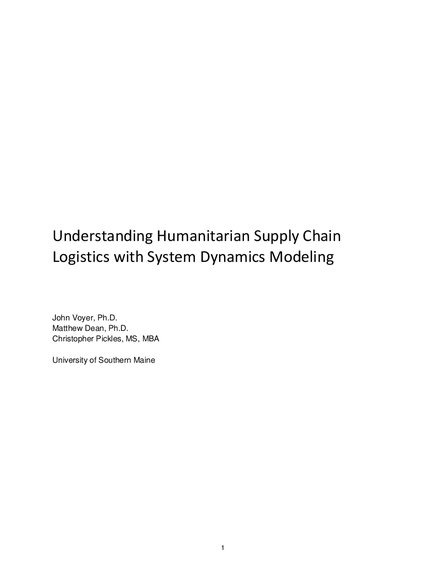
Purpose – We explore the short-term humanitarian response to a natural disaster that prompts a rapid influx of relief supplies to the area affected by the disaster, aiming to understand the dynamics of systemic processes that apply to humanitarian supply chain logistics.
Findings – Of all the stocks in our model of the Humanitarian Stock Management System, the most important was the Cumulative Food distributed to disaster victims. In all of our simulation runs, victims eventually got all the food they needed, but at varying speeds (fast in the base run, slow in runs where repair of infrastructure was slow). However, the most problematic stock was the amount of Food in the Central Warehouse. In almost all the runs, that stock contained an excess of food (which is very common in such situations), resulting in waste and inefficiency. This problem was worst when the agency panicked at the outset and doubled its estimate of needed food, and when, as is often true, the agency received too many in-kind donations of food. The most interesting finding was that “managing” donations led to the best overall performance--low waste, good relief for victims.